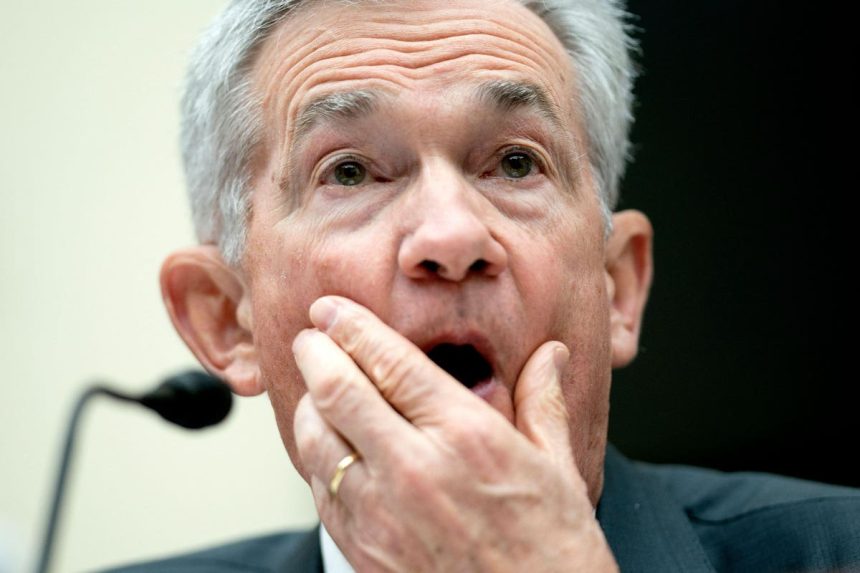If commerce is the economic foundation of a society, then people working, producing, spending, and living are the essence. And yet, when it comes to the economy, so the experts say, rising wages and hefty levels of employment are a big driving force of inflation.
That’s led to a circular argument within Federal Reserve circles, one that came to light explicitly today, June 21, 2023, in Fed Chair Jerome Powell’s semiannual monetary policy report to Congress.
In the opening, Powell, starting with the importance of controlling inflation to reach stable prices, said, “Price stability is the responsibility of the Federal Reserve, and without it, the economy does not work for anyone. In particular, without price stability, we will not achieve a sustained period of strong labor market conditions that benefit all.”
And yet, almost immediately following, in his discussion of the current economic situation and outlook, Powell said the labor market “remains very tight,” with job gains averaging 314,000 a month since January. The good news in his eyes includes signs that supply and demand of labor are “coming into better balance,” “some signs of easing” in nominal wage growth, and some decline in job vacancies.
Those are apparently good, as Powell then said, “With inflation remaining well above our longer-run goal of 2 percent and with labor market conditions remaining tight, the Federal Open Market Committee (FOMC) has significantly tightened the stance of monetary policy.” Nothing surprising there. The Fed and various economic hawks have suggested or directly claimed that too much pay for people is a problem.
That gets us to the paradoxical argument that is clear in this limited speech, where the parts both were said without sufficient time and space between to lose the connection. On one hand, the Fed needs to control prices, which means inflation, for a sustained strong labor market. And yet, a sustained strong labor market is supposedly one of the major causes of inflation.
People apparently have to stop getting more money and being in such demand, even though wage increases have not generally been equal to inflation rates, which means people keep losing economic spending power.
There’s been a long-held tenet of economics, called the Phillips Curve, that suggests a close connection between employment levels and inflation. Want less inflation? You need higher unemployment. A classic case for the often quoted and sometimes disputed anonymous Vietnam War quote reported by Peter Arnett in coverage of the battle of Bến Tre: “It became necessary to destroy the town to save it.”
This Phillips Curve, though, has been criticized heavily over the decades, as consultant and former Fed macroeconomist Claudia Sahm noted. “In the 64 years since [it was initially stated], macroeconomists have learned much about when it holds (rarely) and when it doesn’t (often),” she wrote. See her post for more details.
Supply chain issues badly disrupted the economy during the pandemic — an embodiment of a warning I had heard for at least 20 years from experts in logistics who said everything was balanced too finely. Corporate executives wanted to reduce inventory to make balance sheets more appealing to investors. When everything depends on exacting execution, small errors can cause perturbations. Large errors can wipe out the results, as happened.
Profiteering can help. Not to say that many industries weren’t hurt by rising supply costs. The cost of construction for buildings, for example, has seen far more than 40% cost increases since 2019. That’s a combination of rising costs of labor, materials and components, financing, land, insurance, and more.
But there has been ample evidence, as PBS economist correspondent Paul Solman noted in 2022, that the numbers and statements from some CEOs of gigantic companies made clear that companies were noting labor and materials costs and more than offsetting them.
In fact, in a 2022 earnings call for Tyson Foods
TSN
CFO
In other words, what’s been blamed on employees might better be aimed at corporate boards, CEOs, and other executives. Below is a graph from the Federal Reserve Bank of St. Louis showing the indexed changes in corporate profits and compensation of wages and employees.
[profits and comp graphs]
These lines are adjusted for inflation and show indexed relative change, not absolute values. In the late 1990s, the relationship between corporate profits and employee compensation broke its long-standing pattern. More and more of what companies made were retained, not shared. Look in particular at the post-2020 figures. Absolutely record profits that increased at historical rates. Employee compensation? Moving along as it had.
Maybe the solution to inflation is not hindering worker pay and increasing unemployment. It sure looks like greater moderation on the part of corporations could go a long way.
Read the full article here


